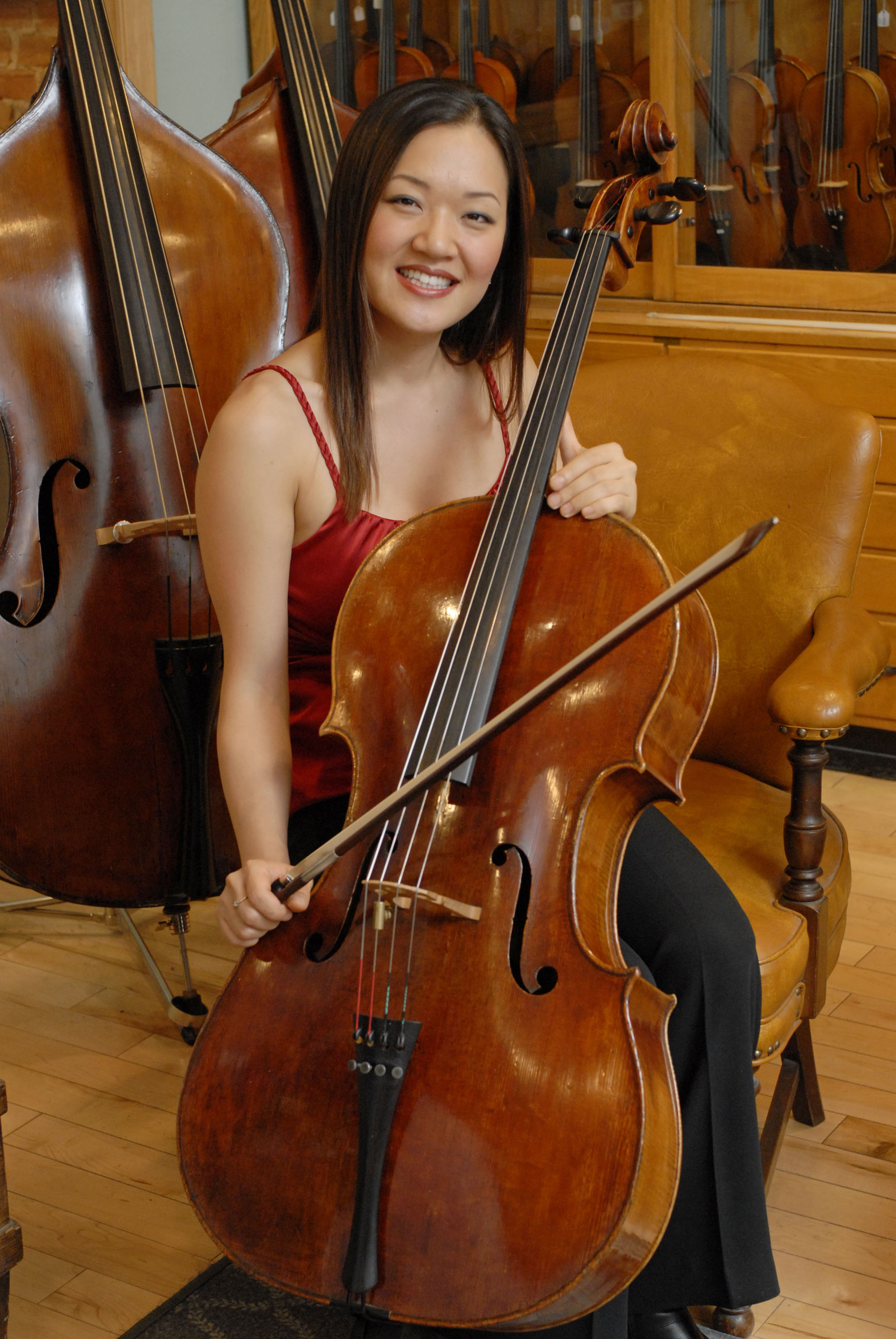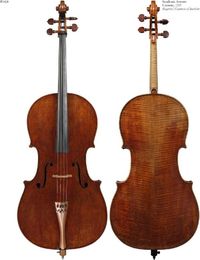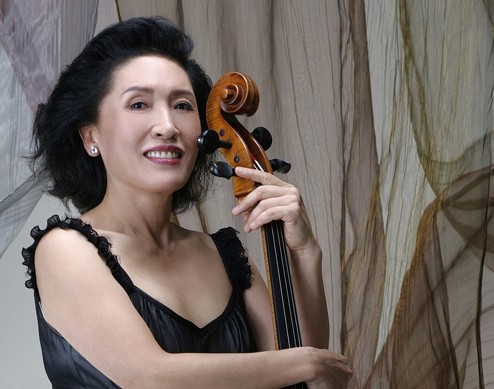By Andy Fein, Luthier at Fein Violins
If you have read some of my past blog posts, you probably realize I love Stradivarius violins. But it is Stradivarius' cellos that I am enamored with. I really love Stradivarius cellos. I really, really, love Stradivarius cellos.
The first Stradivarius cello I encountered is the one that has stuck in my memory for decades. The 'Braga' cello, made by Stradivarius in Cremona about 1731. The 'Braga' is currently played by the wonderful Korean cellist Myung-Wha Chung. It is one of the few cellos that was made on the smaller scale form that Stradivarius developed, the 'Forma B Piccola'. While I was in my apprenticeship in Chicago, Kenneth Warren, Sr. brought the 'Braga' cello to us to examine. I took the opportunity to spend an immense amount of time with it. OK, I fell in love with it!
The Piccola part of the form name might lead you to believe that the 'Braga' and other cellos made on this form are small cellos with petite dimensions. Not quite. They are "piccola" (Italian for small) only in relation to Stradivarius' original large form cellos, which were (ah, how can I put this delicately) as big as a house and played like a truck!
The standard body length of a cello today is about 742 to 760mm (about 29 1/4" to almost 30"). Some makers make larger cellos, some smaller. There are no international laws enforcing cello dimensions.
Stradivarius' early cellos, like the 'Medici' of 1690 were built on the larger form. The Medici retains its original body length of 792mm (about 31 1/4"). Only one other of the larger Stradivarius cellos retains its large body, the 'Castelbarco' of 1699. The Castelbarco is in the collection of The Library of Congress. Not only do they have a long body length. They are also wide in the upper bouts, which makes it hard for many people to reach around the shoulders to play in the upper positions.
All of Stradivarius' other cellos made on the larger form have been "cut down" to more modern dimensions. A travesty in historical terms, but illustrative of how difficult the larger instruments were to play.
Forma B was probably developed sometime after 1700. With the 'Cristiani' cello of 1700, the body length is down to about 762mm ( about 30"). The late Bernard Greenhouse's beautiful cello, the Paganini, Countess of Stainlein is the first cello that seems to be clearly built on the Forma B. The body length of the ex-Greenhouse cello is about 762mm as well, but had a narrower body, a shorter string length, and the ribs were higher. So, you have a cello that has a large air volume but is much, much easier to play (particularly in higher positions!).
About 1726, Antonius Stradivarius (working with his sons Francesco and Omobono and probably Carlo Bergonzi, among others) developed an even smaller and more manageable cello form, Forma B Piccola. Piccola means "small" in Italian. These cellos were definitely small compared to the behemoths that Stradivarius made prior to 1700. The 'Braga' cello was made on this form. The beautiful 'De Munck' cello of 1730 was also made on this petite form.
The nice thing about the post 1700 cellos, and particularly the Forma B Piccola cellos, is that they have remained largely original. Unlike the cut down cellos that were originally made on the large form.
With the original cellos, the work and varnish are extraordinary! Much larger areas of original varnish are visible. The f holes and purfling are beautiful. The scrolls are amazing! And there is an obvious artistic concept that ties the whole instrument together. Ok, I admit it. I love cellos. And I really love Stradivarius' cellos!
` Gregor Piatigorsky playing his Stradivarius cello
Yo Yo Ma playing his Stradivarius cello
Bernard Greenhouse playing on his 'Paganini, Countess of Stainlein' Stradivarius cello of 1707
Excellent references for further reading are the books written by Stewart Pollens on Stradivari, Charles Beare's book for the Antonio Stradivari Cremona Exhibition of 1987, and the Hills book on Antonio Stradivari.
If you have read some of my past blog posts, you probably realize I love Stradivarius violins. But it is Stradivarius' cellos that I am enamored with. I really love Stradivarius cellos. I really, really, love Stradivarius cellos.
The first Stradivarius cello I encountered is the one that has stuck in my memory for decades. The 'Braga' cello, made by Stradivarius in Cremona about 1731. The 'Braga' is currently played by the wonderful Korean cellist Myung-Wha Chung. It is one of the few cellos that was made on the smaller scale form that Stradivarius developed, the 'Forma B Piccola'. While I was in my apprenticeship in Chicago, Kenneth Warren, Sr. brought the 'Braga' cello to us to examine. I took the opportunity to spend an immense amount of time with it. OK, I fell in love with it!
 |
| Steven Isserlis and his Stradivarius cello |
The Piccola part of the form name might lead you to believe that the 'Braga' and other cellos made on this form are small cellos with petite dimensions. Not quite. They are "piccola" (Italian for small) only in relation to Stradivarius' original large form cellos, which were (ah, how can I put this delicately) as big as a house and played like a truck!
Pablo Ferrandez performing 'Song of the Birds' on the 'Lord Aylesford' cello
The standard body length of a cello today is about 742 to 760mm (about 29 1/4" to almost 30"). Some makers make larger cellos, some smaller. There are no international laws enforcing cello dimensions.
Stradivarius' early cellos, like the 'Medici' of 1690 were built on the larger form. The Medici retains its original body length of 792mm (about 31 1/4"). Only one other of the larger Stradivarius cellos retains its large body, the 'Castelbarco' of 1699. The Castelbarco is in the collection of The Library of Congress. Not only do they have a long body length. They are also wide in the upper bouts, which makes it hard for many people to reach around the shoulders to play in the upper positions.
All of Stradivarius' other cellos made on the larger form have been "cut down" to more modern dimensions. A travesty in historical terms, but illustrative of how difficult the larger instruments were to play.
 |
| Korean-Canadian Cellist Soo Bae with the 'Bonjour' Stradivarius |
 |
| 'Paganini, Countess of Stainlein Stradivarius cello, 1707 |
 |
| The 'Duport' Stradivarius cello of 1711 |
About 1726, Antonius Stradivarius (working with his sons Francesco and Omobono and probably Carlo Bergonzi, among others) developed an even smaller and more manageable cello form, Forma B Piccola. Piccola means "small" in Italian. These cellos were definitely small compared to the behemoths that Stradivarius made prior to 1700. The 'Braga' cello was made on this form. The beautiful 'De Munck' cello of 1730 was also made on this petite form.
 |
| The 'Braga' cello by Antonius Stradivarius, Cremona, circa 1731 |
Steven Isserlis on 1730 'De Munck'
The nice thing about the post 1700 cellos, and particularly the Forma B Piccola cellos, is that they have remained largely original. Unlike the cut down cellos that were originally made on the large form.
 |
| The 'Batta-Piatigorsky' Stradivarius cello of 1714 |
With the original cellos, the work and varnish are extraordinary! Much larger areas of original varnish are visible. The f holes and purfling are beautiful. The scrolls are amazing! And there is an obvious artistic concept that ties the whole instrument together. Ok, I admit it. I love cellos. And I really love Stradivarius' cellos!
 |
| Myung-Wha Chung with her 'Braga' Stradivarius cello |
Hear Myung Wha Chung playing her 'Braga' Stradivarius cello with her sister, violinist Kyung Wha Chung
A Comparison of the 1696 Lord Aylesford, the 1730 Feuerman, and the 1736 Paganini
by Pablo Ferrández

No comments:
Post a Comment